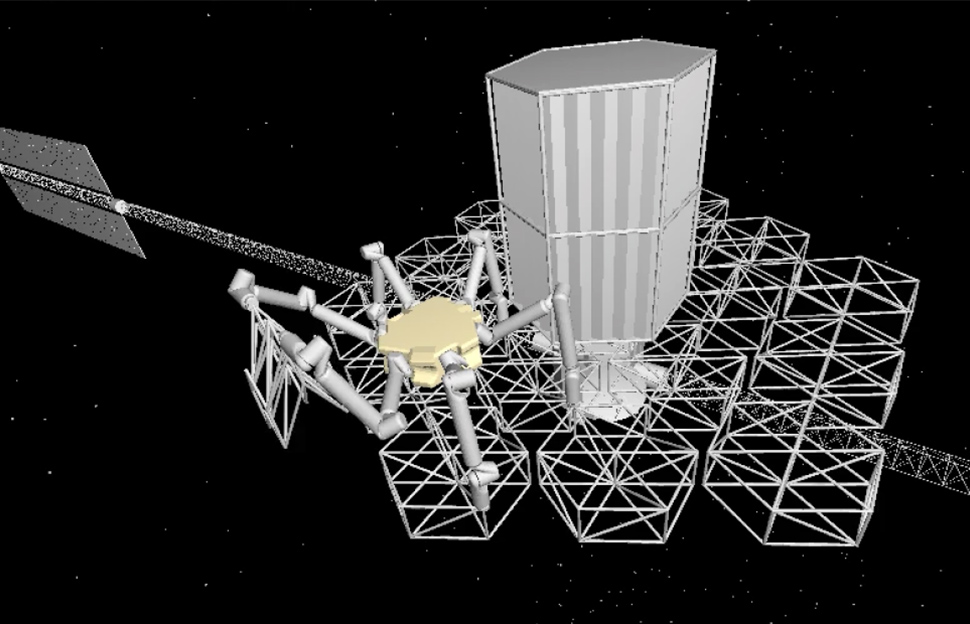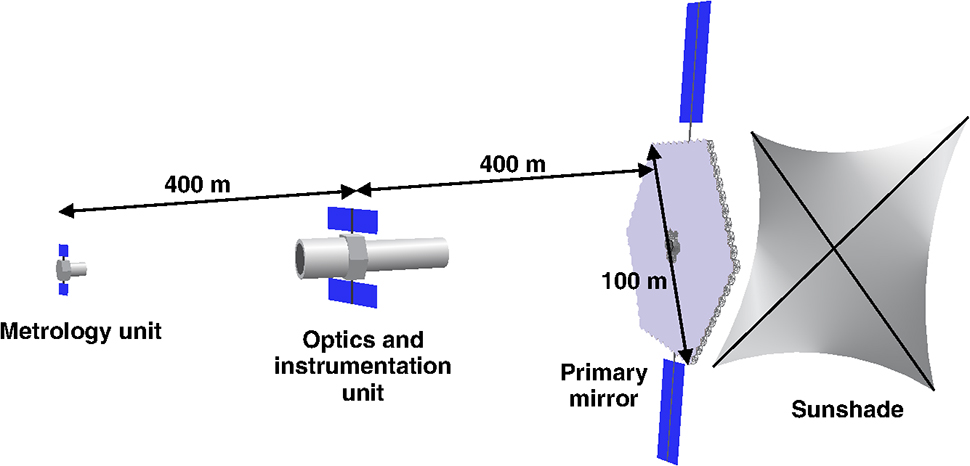
14th July 2016 Robots could build giant telescopes in space Researchers have published a new concept for space telescope design that uses a modular structure and robot to build an extremely large telescope in space, faster and more efficiently than human astronauts.
Enhancing astronomers' ability to peer ever more deeply into the cosmos may hinge on developing larger space-based telescopes. A new concept in space telescope design makes use of a modular structure and an assembly robot to build an extremely large telescope in space, performing tasks that would be too difficult, expensive, or time-consuming for human astronauts. The Robotically Assembled Modular Space Telescope (RAMST) is described by Nicolas Lee and his colleagues at the California Institute of Technology and the Jet Propulsion Laboratory in an article published this week by the Journal of Astronomical Telescopes, Instruments, and Systems (JATIS). Ground-based telescopes, while very large and powerful, are limited by atmospheric effects and their fixed location on Earth. Space-based telescopes do not have those problems – but have other limits, such as launch vehicle volume and mass capacity. A new modular space telescope that overcomes restrictions on volume and mass could allow telescope components to be launched incrementally, enabling the design and deployment of truly enormous space telescopes. The Hubble Space Telescope features a mirror diameter of 2.4 m (7.8 ft). Its successor, the James Webb Telescope – due for launch in 2018 – will be nearly triple this size at 6.5 m (23 ft). A longer-term proposal known as the Advanced Technology Large-Aperture Space Telescope (ATLAST) would be even larger, with a mirror up to 16 m (52 ft) in width. The future concept by Lee and his colleagues, however, would dwarf all of these, spanning 100 m (328 ft). This would be powerful enough to obtain detailed views of exoplanets in other star systems, as well as images from the deep universe with phenomenal clarity.
The team's paper, "Architecture for in-space robotic assembly of a modular space telescope," focuses primarily on a robotic system to perform tasks in which astronaut fatigue would be a problem. The observatory would be constructed in Earth orbit and operated at the Sun–Earth Lagrange Point 2. "Our goal is to address the principal technical challenges associated with such an architecture, so that future concept studies addressing a particular science driver can consider robotically assembled telescopes in their trade space," the authors write. The main features of their proposed architecture include a mirror built with a modular structure, a general-purpose robot to put the telescope together and provide ongoing servicing, and advanced metrology technologies to support the assembly and operation of the telescope. An optional feature is the potential ability to fly the unassembled components of the telescope in formation. The system architecture is scalable to a variety of telescope sizes and would not be limited to particular optical designs. "The capability to assemble a modular space telescope has other potential applications," says Harley Thronson, a senior scientist for Advanced Astrophysics Concepts at NASA's Goddard Space Flight Centre. "For example, astronomers using major ground-based telescopes are accustomed to many decades of operation, and the Hubble Space Telescope has demonstrated that this is possible in space if astronauts are available. A robotic system of assembly, upgrade, repair, and resupply offers the possibility of very long useful lifetimes of space telescopes of all kinds."
---
Comments »
|









